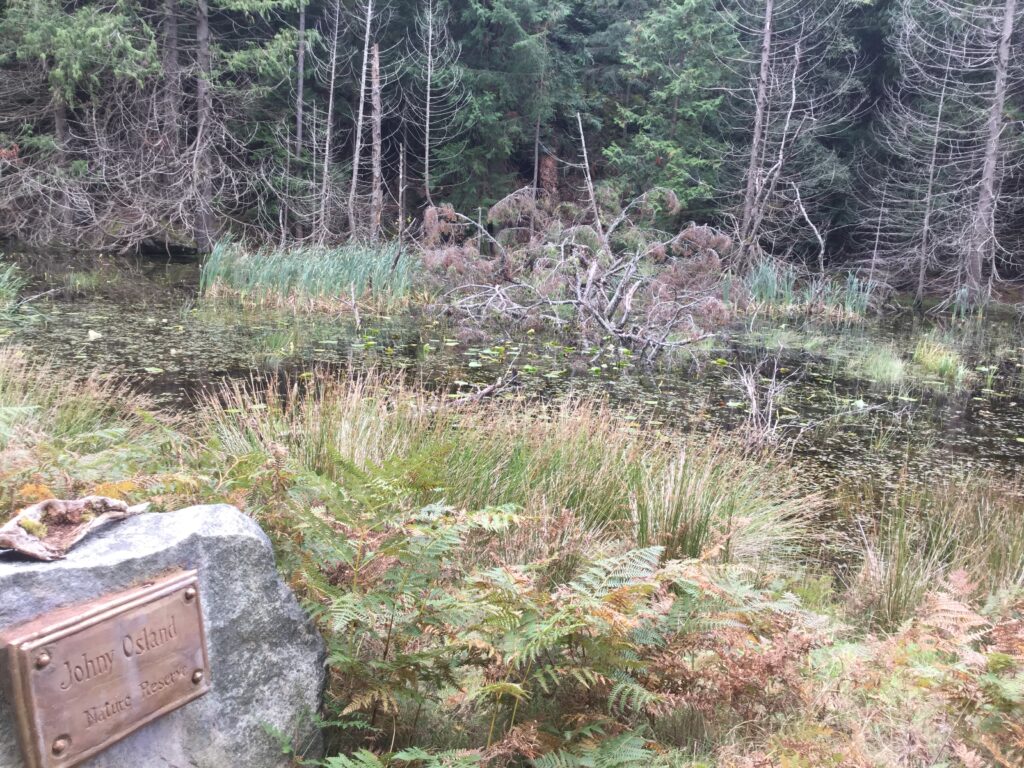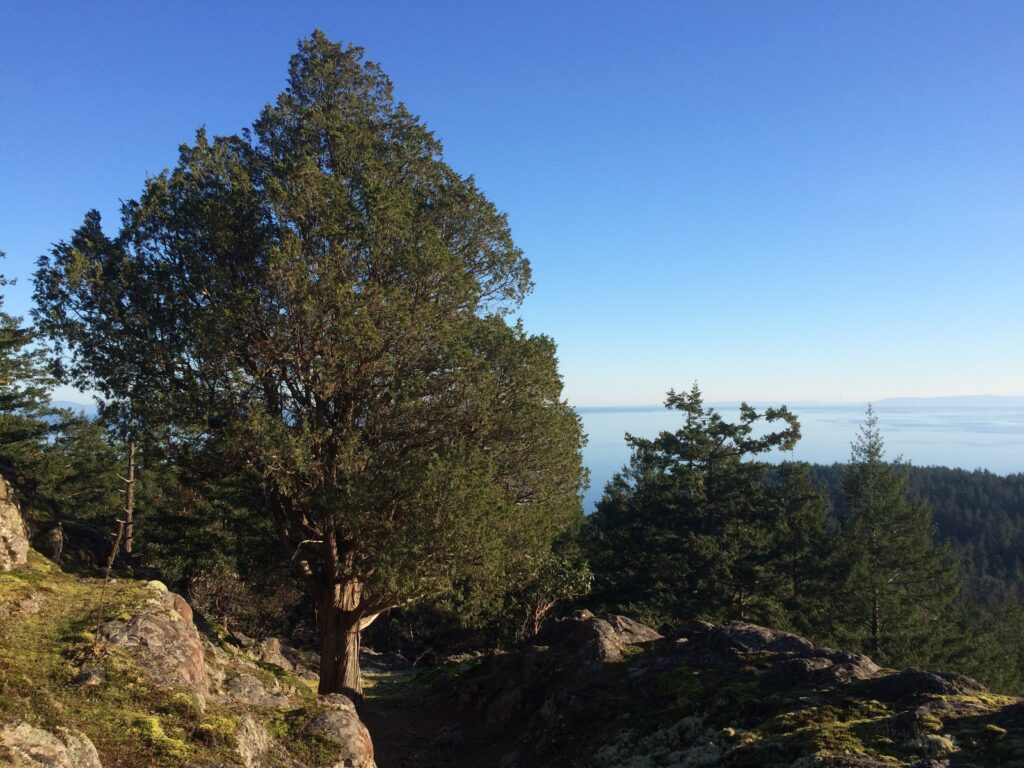Lasqueti (Xwe’etay) is an off-grid island with approximately 498 residents, located in the Georgia Strait in the Salish Sea. Lasqueti and surrounding islands are within a globally important biogeoclimatic zone. The Coastal Douglas-fir (CDF) zone is the rarest in BC and is of great conservation concern. The CDF zone is less than 1% of BC and Lasqueti is in all of it.
Compared to most other Gulf Islands Lasqueti-Xwe’etay has some of the most intact contiguous forest, lowest level of human disturbance, intact wetlands and undeveloped shoreline. Critical habitat for federally threatened Marbled Murrelet and Killer Whale has been noted on Lasqueti-Xwe’etay. Forage fish spawning habitat have also been identified on several Lasqueti-Xwe’etay beaches. These fish, sand lance and surf smelt, are a key food source for salmon and other native fish species found in Salish Sea.
Lasqueti Island, or Xwe’etay, is surrounded by another 20 smaller islands, within the Lasqueti Island Local Trust Area. We have a relatively small population, yet it continues to grow. Increasing population with its resulting development is one of the major challenges LINC faces.

Forest Ecosystems:
Lasqueti is lucky enough to still have a few areas of Old Forest (older than 250 years). Mature Forests (80 – 250 years) comprise 66% of Lasqueti’s forests. These forests are vital for their biodiversity, providing habitat for wildlife. In our world of changing climates, these forests are the lungs of our planet, absorbing carbon while cleaning the air and releasing oxygen.
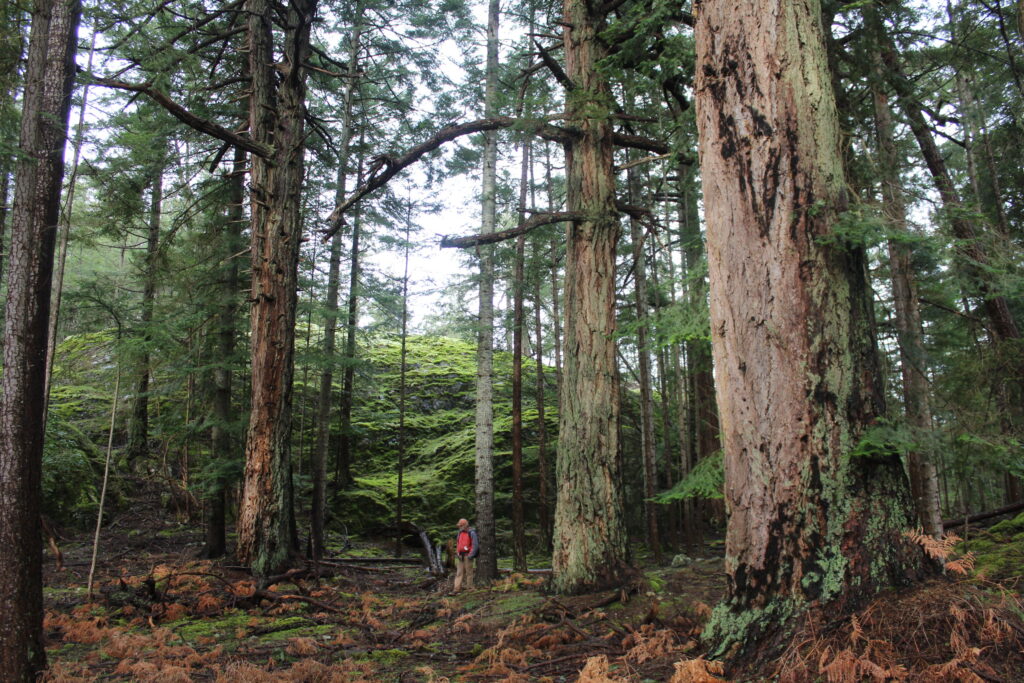
The Woodland Ecosystem is dominated by a mix of deciduous and coniferous species, including maple, alder, arbutus and the treasured juniper tree. These woodland areas connect to other sensitive ecosystems – the Cliff and Herbaceous Ecosystems. All three of these ecosystems are found on Lasqueti, providing habitat for wildflowers, lichens, ancient mosses, butterflies and several rare species.
Marine & Fresh Water Ecosystems:
The diverse ecosystems associated with water are: Wetland, Freshwater, Riparian, Marine Riparian and the Beaches, Bluffs, and Nearshore Ecosystems. Even though Lasqueti is a relatively dry and rocky island, the small pockets of these ecosystems that still exist are fragile, providing nesting and feeding grounds for birds and fish. There are a few bays on Lasqueti that are spawning grounds for remnant populations of Pacific herring, Pacific sandlance and Surf smelt. For more about these forage fish, check out the nature guides found here. We also have a few of the dwindling kelp and eelgrass beds, which are essential shelter and feeding grounds for fish.

To see an overview about the Salish Sea, check out Bob Turner’s, video.
Birds:
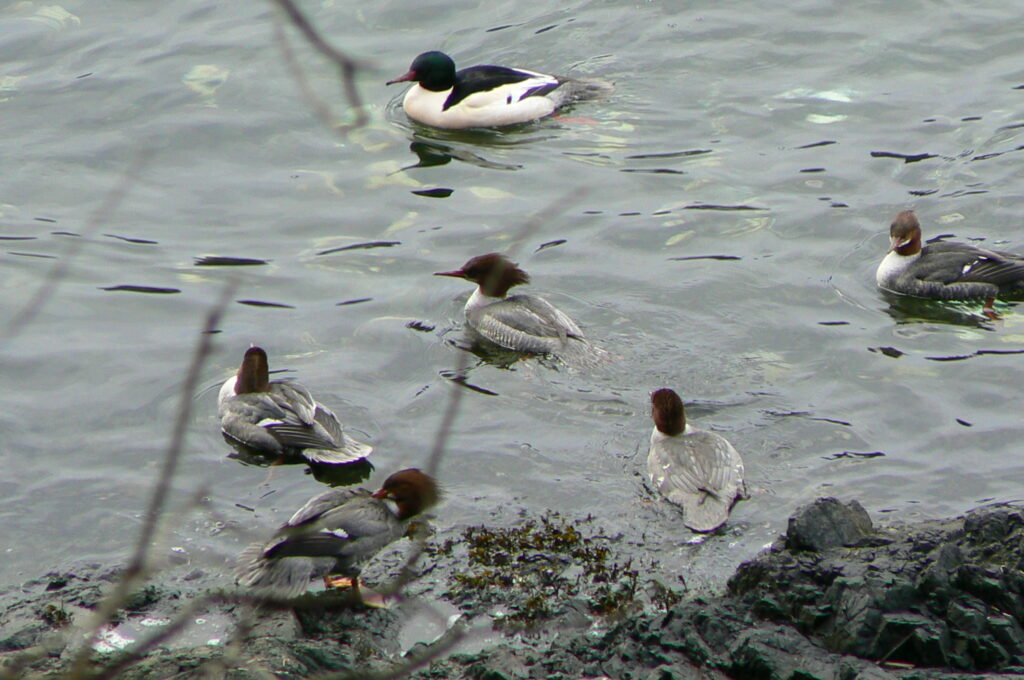
The forests, gardens, lakes and the ocean surrounding Lasqueti Island provide birds with nesting sites, food and wintering areas. Many birds we commonly see are residents, some living here all year include: white-crowned sparrows, common and hooded mergansers, dark-eyed juncos and Pacific wrens, Anna’s hummingbirds, ravens and crows, sharp-shinned and Coopers hawks, barred owls. Others migrate here to nest, such as rufous hummingbirds, warblers, vireos and swallows.
Blue-listed birds, whose numbers are decreasing, also nest here: Olive-sided flycatcher, Band-tailed pigeon, Barn swallow and Purple martin. Many birds that nest in the interior of the province come to the coast for the winter. Goldeneyes and buffleheads are common in the bays, while further out it is not unusual to see the blue-listed Marbled and Ancient murrelets. Large rafts of Long-tailed ducks and Surf scoters, both blue listed, have been seen off the Lasqueti shore.
Species at Risk:
Our island is a sanctuary for a number of officially listed species at risk of disappearing in B.C. These are categorized provincially as red listed (facing imminent extinction) or blue listed (at risk). Our forests support the threatened giant chain fern and hosts one of the only populations of hairy gumweed in the province. As well, Lasqueti is one of only a few homes providing critical habitat for the federally red-listed Rigid Apple moss. Many other species at risk occur on Lasqueti and surrounding islands, especially due to the endangered Coastal Douglas-fir (CDF) ecosystem where we live. The CDF contains the highest diversity of plant species in BC as well as the highest diversity of over-wintering bird species in Canada. The Coastal Douglas-fir Biogeoclimatic Zone contains more species at risk than any other ecological zone in Canada (25 globally imperiled species and >225 species that are provincially imperiled or threatened). As a result of human development, 98% (42 of 43) of the ecological communities in the CDF are considered “at risk”. (Coastal Douglas-fir Partnership)

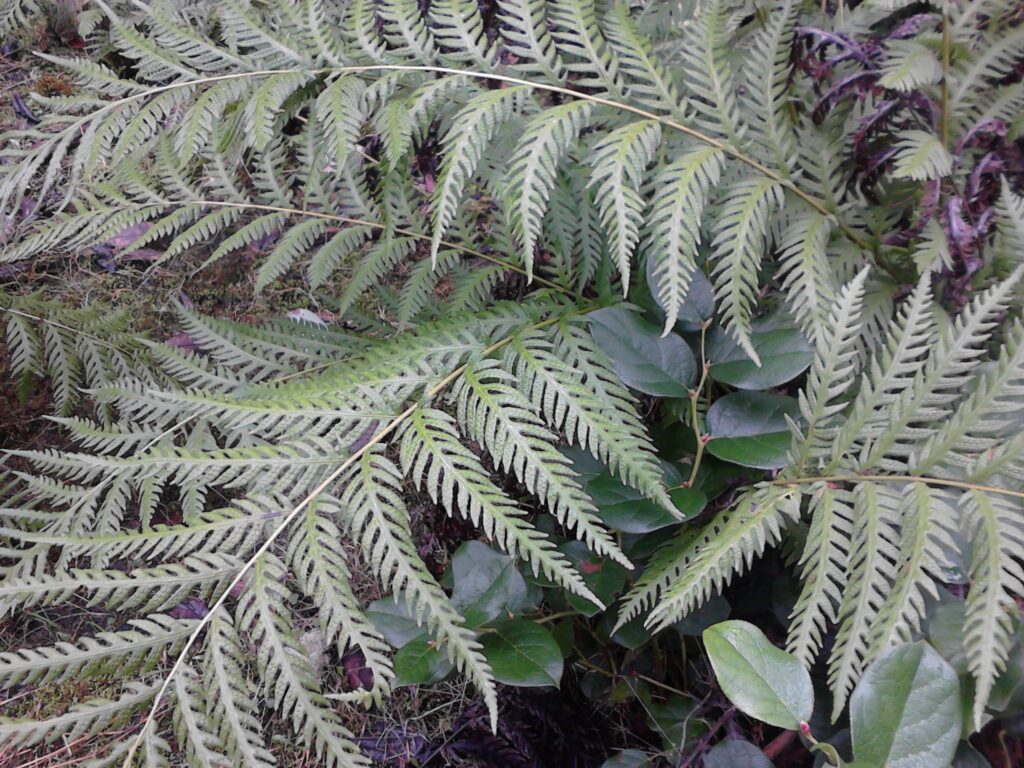
Social & Cultural Context
Lasqueti-Xwe’etay’s official population counted in 2016 was 399 residents. However, because of the large number of part-time residents and summer visitors the actual population of the island varies considerably. It has been estimated that fully 40% of the 407 dwellings are seasonally occupied. Since 2016 our population has grown again by 24.4% with total population in 2021 of 498 with 506 houses. Increasing population with its resulting development is one of the major challenges LINC faces. Many of LINC’s supporters are part-time residents and their contributions, both financial and through volunteer time, is really appreciated.
“Xwe’etay” meaning Yew Tree is the traditional Coast Salish name for the island. Recently, many of the islanders have adopted this name to honour the island’s long Indigenous history. The island contains many First Nations archeological sites (middens, clam gardens, fish traps) that date back 3,500 years. Many of these sites are located in ecologically sensitive sites like estuaries and beaches. Archeological sites are very sensitive to disturbance such as house building and marine works like docks.There are 13 First Nations and entities who have cultural connections to Lasqueti’s/Xwe’etay’s heritage, including land under Tla’amin Treaty, “crown” lands and shorelines on Lasqueti. In the past few years, some of Lasqueti’s/Xwe’etay’s (crown/public) lands are being considered under varying tenures for First Nations’ reconciliation.
There is also a vibrant legacy of European settler presence on Lasqueti-Xwe’etay in the form of past and present land uses, the rectangular land subdivision patterns, cleared pastures, feral sheep, old buildings, road ways, trails and stories. Working together, we can help conserve and protect biodiversity on these unique islands.


